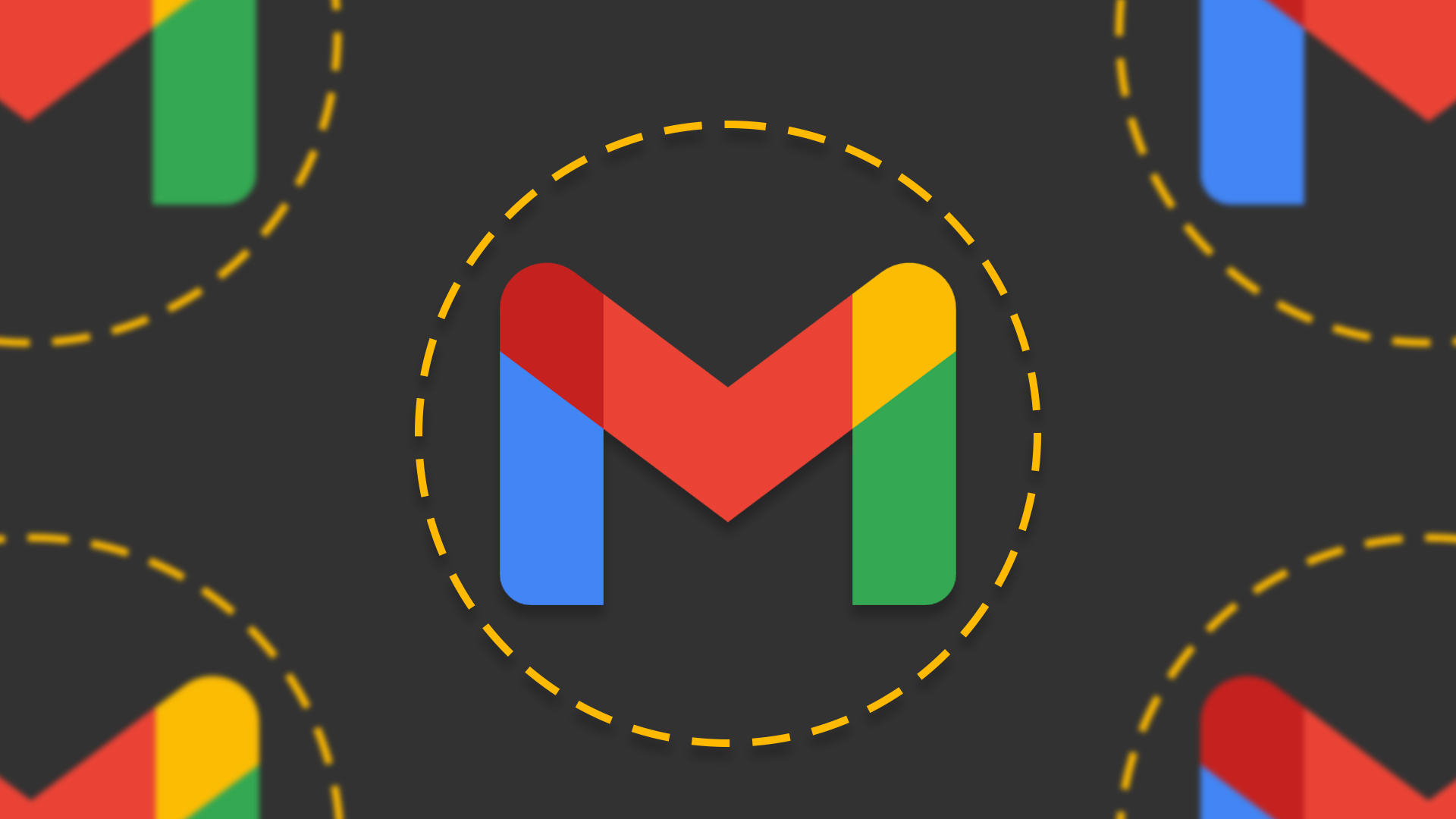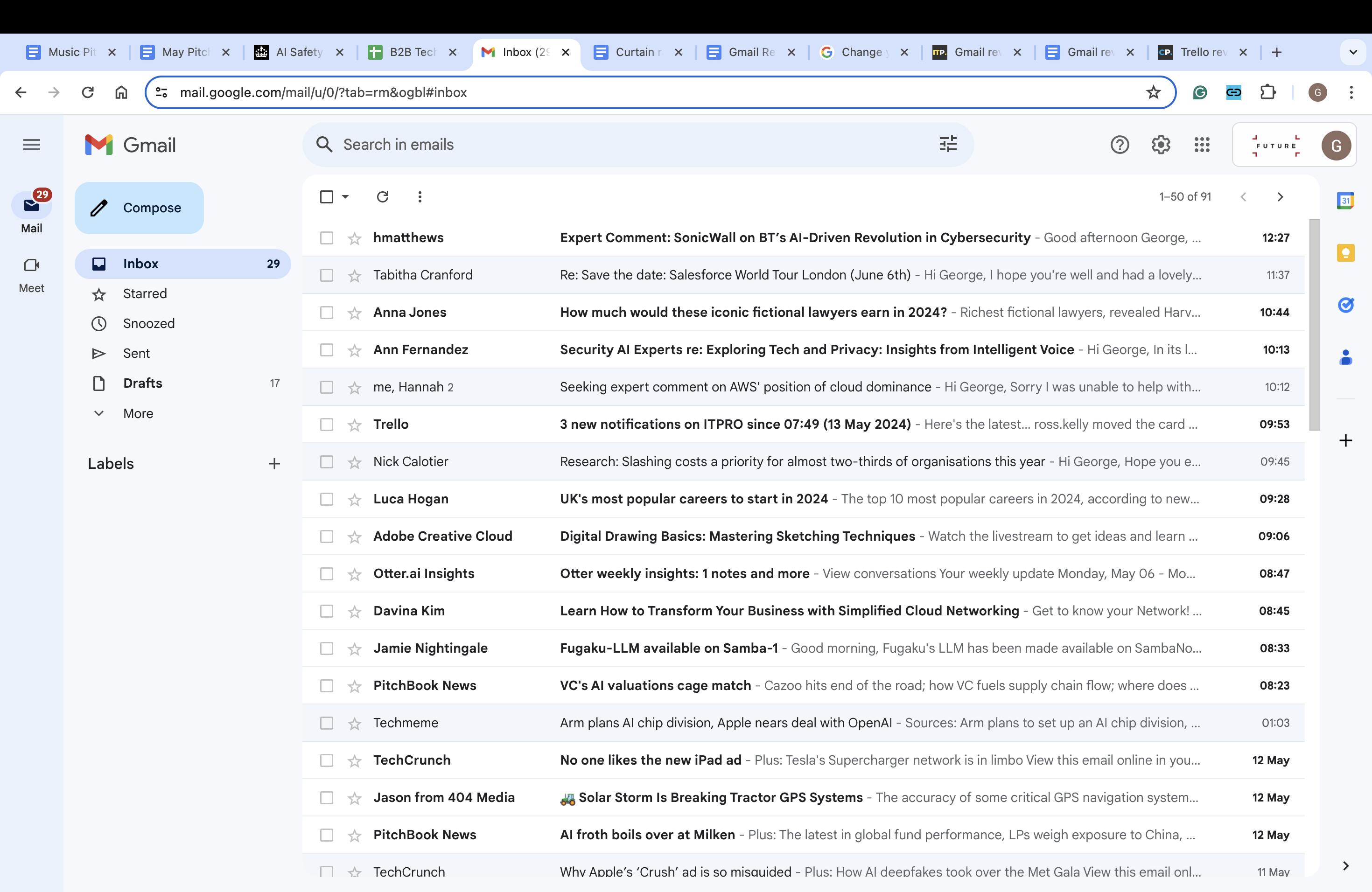Gmail review: A simple yet powerful email client for all types of business
The legacy email client continues to update its offerings for a new generation while still staying true to its original simplicity

-
+
Simple, intuitive interface
-
+
Reliable uptime guarantee
-
+
Integration with other Workspace apps
-
-
Requires a full Workspace subscription
-
-
Less storage capacity compared to Outlook on the cheapest plans

After allaying fears that it was headed for the scrapheap before celebrating its 20th birthday earlier this year, Gmail continues to prove itself both innovative and reliable.
While it's important that platforms respond to the ever-changing technological landscape we live in with new offerings, there's also something to be said for the platforms that maintain a sense of their core ethos. Gmail does just that by blending elegant simplicity with seamless integration of new features such as generative AI tools or enhanced data and security capabilities.
Despite the changes, Gmail still allows users to effortlessly blend their workflows with other Workspace apps. It also maintains a near 100% uptime, while constantly expanding its storage capacity. But it's also doing the one thing it set out to do with increasing efficiency; allowing users to communicate professionally over an interface that's as familiar as it is practical.
Gmail review: Setup
While we're sure we don't have to tell you how to set up a personal Gmail account, using the platform for a business or an organization comes with a few extra steps. To begin with, you'll need to purchase a Google Workspace account, which can be frustrating. Unfortunately, while standalone business Gmail subscriptions would likely be welcomed by many, this is just something businesses have to deal with. There's also a silver lining here, as your company will gain access to the wider Google Workspace environment, which promises online storage, company-wide or team-focused calendars, and video conferencing capabilities through Google Meet.
Once you've signed up for Google Workspace and purchased an account, your company IT or admin team can purchase a new '@yourcompany' domain or use an existing one. If you buy a new one through Google, the setup process should be relatively painless, as the domain will have already been verified. If not, you'll have to verify your domain by finding out who your domain registrar is.
Once your domain's been set up, you can establish Gmail groups to organize meetings and events or work on projects across the organization. Setting up a group is also pretty straightforward, requiring simply that you sign into Google Groups, click 'Create Group,' and enter the group settings and information before it's up and running.
For any growing company, the next logical concern would be managing new and existing employees, ensuring that they have access to their individual accounts and that these accounts are easily secured and managed.
Sign up today and you will receive a free copy of our Future Focus 2025 report - the leading guidance on AI, cybersecurity and other IT challenges as per 700+ senior executives
While all you need to do here is set up the necessary information for a new employee, including name, Gmail address, and password, it's worth bearing in mind that each additional user will incur an increase to your bill dependent on what plan you're using.

If your organization is at enterprise scale, you'll have dedicated IT administrators who, through Google, can manage two-step verification systems to protect employee accounts, among other security measures.
Smaller businesses can pursue similar security measures and Google provides a helpful list of steps to take for companies setting up their Gmails. It suggests that admins, among other things, set up recovery information processes and back-up codes in the event two-step verification stops working.
Gmail review: Navigation

Though few will remember exactly what Gmail's original layout looked like, even new Gmail users would probably be able to work their way around it. That's because, practically speaking, the layout hasn't changed that much. Make it past the login page and you'll still be greeted by the old familiar email stream and folder menu.
The folder selection tool features all the email categories you'd imagine, including starred, snoozed, sent, draft, scheduled, spam, and plenty of others. If you're finding that the folder list is making your Gmail homepage look slightly too cluttered, you can easily hide it by clicking on the three horizontal lines in the top left of the screen.
Also featured on the left, just below these lines, is a toggle that allows users to switch between a 'mail' and 'meet' view, streamlining the often parallel office-essential tasks of email sending and meeting attendance. Hitting the 'meet' button transforms the familiar Gmail layout into a new page fit with a list of your day's meetings on the left, a meeting-by-meeting overview taking up most of the space on the right, and options to either start a new meeting or join an existing one.
You can transform the inbox in another way by hitting the settings cog in the top right – this allows you to alter the visual theme of your inbox as well as alter the inbox settings to display different types of messages at the top, whether unread or starred.
Gmail review: Features
While simply firing off important emails might be at the top of your agenda, other tasks may call for a greater level of complexity in terms of functionality and feature set. Gmail provides for most of the more nuanced organizational workload requirements, coming equipped with all manner of handy features to improve workflow, efficiency, and communication.
On a staff level, Gmail can cut admin tasks in half through useful integrations with other Google Workplace features such as Google Calendar, which allows daily meeting agendas to be emailed directly to employees. Individual staff members can also get a greater handle on emails, with Gmail allowing users to schedule email sends, request read receipts on emails, and even un send emails in the event of a staff mistake or last-minute change to email content.
On a wider enterprise level, making the investment into enterprise-grade Gmail provides IT staff and admin teams with a considerable set of advantages. Perhaps most notable is Google's guarantee of 99.9% uptime to its enterprise users, with the firm able to brag that it has no scheduled downtime periods. Gmail's claims to 99.9% uptime equate to no more than 45 minutes of downtime per month. If uptime does fall below this figure, Google will add on three days of service to a customer's Gmail contract, with this amount of days increasing in parallel with increasing downtime.
Gmail review: Business vs enterprise
There are several different plans you can use for Gmail, all with various merits and differing price points. The deciding factor will likely be the size of your business and the amount of value you'll get out of the more advanced offerings.
At the lower end, there's the business edition which comes in three different tiers. There's the 'Business Starter' edition which comes at £5 per month per user, the 'Business Standard' edition clocking in at £10 per month per user, and the 'Business Plus' edition, coming at £15 per month per user. These editions are aimed at businesses with between 1 and 300 members of staff, and all three come with a required 1-year commitment as standard.
In terms of basic email admin capabilities, these three editions are largely the same, equipped with custom email addresses, multiple addresses per user, addresses at multiple domains, admin-controlled mailing lists, and user-controlled mailing lists. Where they do differ, however, is in storage capacity. The business starter edition caps out at 30GB in email storage, while the Business Standard and Business Plus come with 2TB and 5TB respectively. Business Plus also comes with the added 'Vault for email' capabilities, as well as eDisocvery and archiving features.
The 'Enterprise Standard' and 'Enterprise Plus' require that your organization contact Google directly for a quote on an individualized price, though these editions do offer a greater range of features.
RELATED WHITEPAPER

Both enterprise editions offer flexible pooled storage across your entire organization – essentially unlimited – as well as a whole suite of added security features such as data loss prevention, Gmail log search in BigQuery, and advanced phishing and malware protection. Enterprise Plus goes even further, offering advanced email attachment scanning, upgraded email encryption, and client-side encryption.
It's worth noting that advanced email delivery options are identical across both business and enterprise editions, which can create a slightly more difficult decision for businesses trying to establish which option is the best value for money.
Gmail review: Is it worth it?
While Gmail and the required Workspace suite offer a number of enticing features for the prospective business user, it's important to bear in mind the extent to which Gmail stacks up to its rivals. Its chief competitor, Microsoft Outlook, also comes as part of a wider productivity suite, Microsoft 365, and is priced fairly similarly, with the exception of it's highest-end business tier.
Microsoft 365 'Business Basic' is marginally cheaper at £4.90 per user per month, whereas Microsoft 365 'Business Standard' is marginally more expensive at £10.30 per user per month. Microsoft 365 'Business Premium' costs £18.10 per user per month.
Outlook's biggest advantage comes in its storage capacity, with even the most basic Microsoft 365 plan offering 1TB of capacity per employee compared to the far smaller 30GB that Google offers on its equivalent plan.
That being said, Gmail is still a powerful offering for businesses as part of the wider Google Workspace ecosystem, and the value of it as an offering will inevitably depend on your individual business needs.

George Fitzmaurice is a former Staff Writer at ITPro and ChannelPro, with a particular interest in AI regulation, data legislation, and market development. After graduating from the University of Oxford with a degree in English Language and Literature, he undertook an internship at the New Statesman before starting at ITPro. Outside of the office, George is both an aspiring musician and an avid reader.
-
 AI is creating more software flaws – and they're getting worse
AI is creating more software flaws – and they're getting worseNews A CodeRabbit study compared pull requests with AI and without, finding AI is fast but highly error prone
By Nicole Kobie Published
-
 Cohesity deepens Google Cloud alliance in data sovereignty push
Cohesity deepens Google Cloud alliance in data sovereignty pushNews The pair’s expanded collaboration will focus on new integrations for AI, cybersecurity, and data protection
By Daniel Todd Published
-
 Cisco says Chinese hackers are exploiting an unpatched AsyncOS zero-day flaw – here's what we know so far
Cisco says Chinese hackers are exploiting an unpatched AsyncOS zero-day flaw – here's what we know so farNews The zero-day vulnerability affects Cisco's Secure Email Gateway and Secure Email and Web Manager appliances – here's what we know so far.
By Emma Woollacott Published